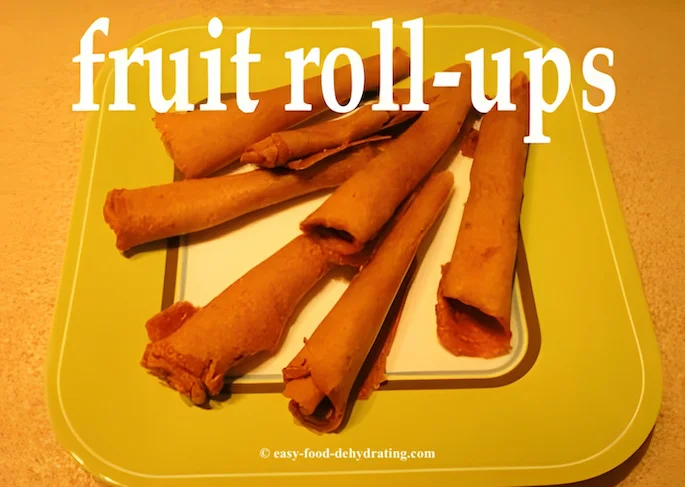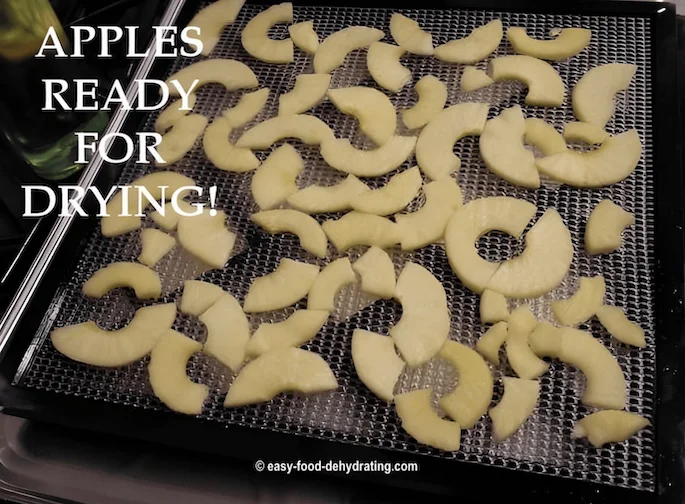- Home
- Prevent Fruit Leather Holes: Dehydrator Snack Tips
How to Prevent Fruit Leather Holes in Your Dehydrator Snacks

Susan Gast, Author
Blogger at Easy Food Dehydrating | A New Sober You | Bored Boomers | Beesville Books
Are you tired of fruit leather holes and your roll-ups looking more like Swiss cheese than a smooth, chewy snack? You're not alone.
 via Ideogram
via IdeogramFolks write in to ask, "Why does this happen and how do I stop fruit leather holes from appearing?"
Holes in fruit leathers are a common frustration, but with my tips coming up, you can prevent the holes and create perfectly smooth hole-free fruit leathers every time.
Why Do Holes Appear in Fruit Leather?
I remember the first time I made fruit leathers. All was going well... until the holes appeared. I did some research as to why and applied the findings.
Understanding the causes is the first step to having a hole-free fruit leather.
Top 4 Reasons for Holey Leathers:
1. Uneven spreading
2. Air bubbles
3. Excess liquid
4. Fruit chunks
Uneven Spreading
Thin spots dry faster and can create holes.
On my related "how to dehydrate fruit roll-ups" page, I show you a way to spread out the puréed mix on your sheets. Caveat: Don't make it TOO THIN towards the center. Nip over to my page here to see the spreading technique, then come on back here!
Back already? Cool... If you still get holes, make sure the leather mix is almost the same thickness all around if you experience a holey leather. Dehydrators with the center hole in the trays tend to dry out faster at the OUTER edges!
Air Bubbles
Trapped air expands during drying, leaving holes behind.
Just like when you make cake batter - to get rid of the air bubbles, bakers bang the cake-batter-filled tins on their countertops a few times to make the air bubbles rise and burst. Do the same with your trays - gently!
Excess Liquid
Too much moisture can cause separation and holes.
Don't make 'em too runny. If it kind of pours out of the blender, it's a bit "thin," so put it back in the blender, and add another apple to the mix (or a banana) - depends on what your fruit base is, of course.
Smash the Fruity Chunks
Large pieces can create weak spots that become holes.
If you are using your blender to make your fruit leather, just look for chunks of fruit that didn't hit the blades fully. When these fruity chunks dry, they contract and can leave holes. We don't want holes.
How to Stop Fruit Leather Holes: Your Pre-Drying Checklist

Follow these four easy steps to set yourself up for hole-free fruit leather success:
#1
Achieve the right consistency:
- Blend fruits thoroughly for a smooth purée.
- Aim for an apple sauce-like texture.
- Drain excess liquid from very juicy fruits.
- Add a thickener like ground chia seeds or apple sauce if needed.
#2
Prepare your tray:
- Use specially made non-stick sheets or parchment paper to prevent sticking.
- Keep your tray level for even spreading.
#3
Spread your mix like a pro:
- Use an offset spatula (Amazon affiliate link) to help you spread it out at a uniform thickness.
- Aim for 1/8 to 1/4 inch thickness across the tray.
- Spread to the edges, but not over them.
#4
Eliminate air bubbles:
- Tap the tray gently on the counter several times.
- Use a toothpick to pop any visible bubbles.
Drying Process: Keep Your Eye on It!
Even with perfect prep, issues can arise while drying your leathers, so remember to:
- Set the right temperature: 135°F is ideal for most fruits.
- Rotate trays: Every 2 to 3 hours to ensure even drying.
- Check regularly: Especially towards the end of the drying process.
💡 Tip: Use our Fahrenheit to Celsius converter here on our site!
Yeah, I know the dehydrator manufacturers all claim that you don't need to rotate your trays due to their perfect air-drying system blah blah blah - but I beg to differ.
Depending on where your dehydrator fan is located, odds are the foods closest to that fan WILL dry out faster. Makes sense, right? Right!
Troubleshooting: Fixing Holes Mid-Dry
If you spot holes forming:
- Pause the dehydrator.
- Prepare a small amount of fresh fruit purée (same as your original mixture).
- Carefully fill the holes using a small spoon or piping bag.
- Smooth the surface gently.
- Resume drying, checking more frequently.
The trouble with spackling up holes with purée, though, is that those areas will take longer to dry than the rest of it. Also, the partially-dried part of the leather may get overly dry. Let's aim for evenness from start to finish.
Download our FREE eBook: Six Simple Steps
To better understand why we dehydrate food and the food dehydration process itself, download my free Six Simple Steps eBook today - simply click the link or the image.
The free eBook covers the necessary steps to safely dehydrate fruit, vegetables, and (cooked) meats!
And while you're downloading the Six Simple Steps, also treat yourself to our "How to Grow & Dehydrate Herbs" too! Click here to visit the free Herb Book page.
It's a "thank you" gift for visiting this Easy Food Dehydrating website and trusting me with your email addy!
Expert Tips for Hole-Free Fruit Leather Success
Pick the Right Fruit
Pick the right fruit for your fruit leathers. Follow these four suggestions:
- Choose the right fruits: Apples, berries, and stone fruits work well.
- Avoid seeds and fibers: Strain out the seeds and fibers so you won't get weak spots.
- Don't over-dry: Leather should be pliable, not brittle.
- Always allow to cool down to room temperature before handling. I didn't one time and felt like using a chisel to remove it. Lesson learned.
If your leathers are sticking more than you like, use a light spraying of oil next time.
Use vegetable or coconut oil (for a less obvious oily taste than say, olive oil) and use a very light spray motion across the tray. Do the spraying in the kitchen sink!
Breaking down the above four points:
The reason for choosing apples, berries, and stone fruits is that apples are high in pectin which helps give us a good even texture and have a neutral flavor.
The reason for berries: they're rich in flavor and natural sweetness and have a good balance of acid and sugar.
Stone fruits like apricots, peaches, and plums also have a good balance of sweetness and acidity, plus they purée well.
Regarding the seeds and fibers: If seeds remain in the mix, they'll create hard spots and could create a choking hazard - especially where kids are concerned. Fiber can be stringy which affects the overall consistency of the leather.
So, seeds and fibers have a tendency to create weak spots as our leathers dry...
Fruits to Avoid Using in Fruit Leathers
Most fruits do well in a dehydrator, leather-wise, but... (and there's always a but!):
Citrus Fruits
Citrus: Lemons, limes, oranges, plus grapefruits have a high acidity and could make for a tart leather. Hey, many folks like tart-tasting stuff. I remember as a kid enjoying a hard candy called Sour Balls and another one called Pear Drops (which, to me, smelled like nail polish remover!)
So, if you're not into tartness, you'll need to add sugar. And you know the bad rap sugar's getting... (rightly so). Also adding excessive sugar can make the leather gummy and sticky.
Watermelon and other Melons with High Water Content
Extremely high-water content melons make it time-consuming to dry, and they sometimes come out brittle and prone to those dreaded holes...
Bananas
Believe it or not, bananas can turn really brown and look horrible. Best to mix bananas in with other fruits, you know - blend it in.
Pineapple
Pineapples contain the bromelain enzyme which messes with the "setting" of a fruit leather, and that can result in a sticky mess.
Kiwi
Yep, they contain seeds - so if you want to use kiwi, strain the seeds out first.
Whole Berries: Blackberries, Raspberries
It's those large seeds that if left in, cause holes. Like the kiwi fruit, strain 'em first if you want to use these otherwise awesome berries.
Fruit Leather Perfection: Practice Makes Perfect
Remember, creating the perfect fruit leather is part science, part art. Don't feel bad if your first few attempts aren't perfectly hole-free.
If you follow the tips I've shared, and with a bit of patience and practice, you'll be making beautiful, hole-free fruit leather like a pro, too.
Happy dehydrating!
Mix it Up!
See this ingenious use of two flavors of fruit purée by Slizzerd on Reddit who used two different kinds of fruit mixes and spread it out in bands, using square solid sheets.
Thanks for reading...
Grab 5 Dried Food Recipes You'll Actually Love
Don't forget to grab a copy of our all new
5 Dried Food Recipes (That Actually Taste Great)
They're my all-time favorite easy dried food meals!
Get it here right now.
For Free!
Before You Go...
If you like the content, please give me some love by clicking on the 🩷 in the lower right-hand corner (on just about all my pages). This signals to me that you find it enjoyable and useful.
And don’t forget to grab your FREE 5 Dried Food Recipes via the opt-in form — they're waiting for you! Thank you so much! (Get it here).





















